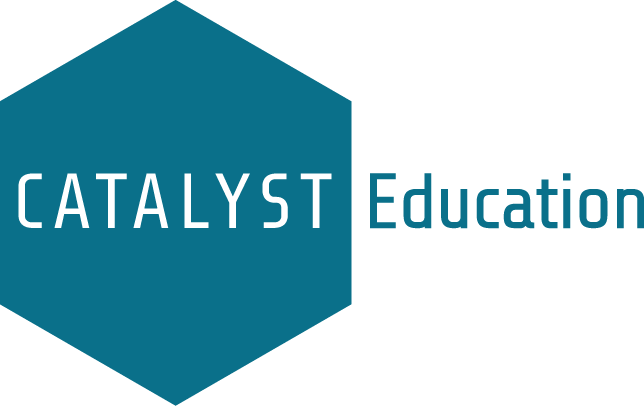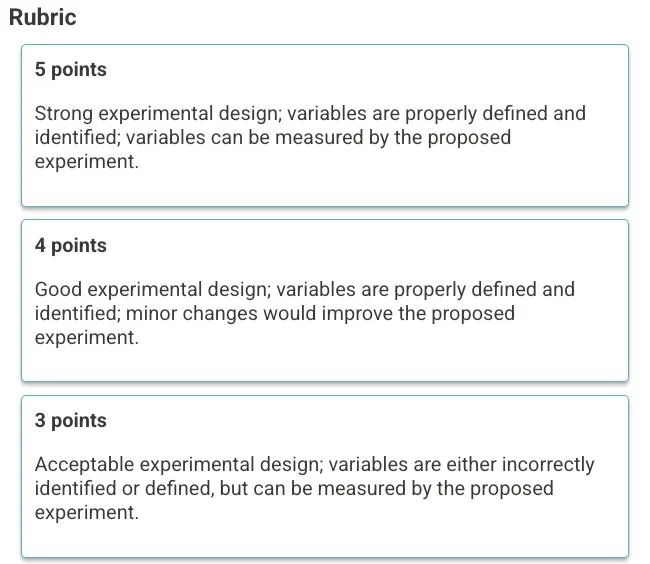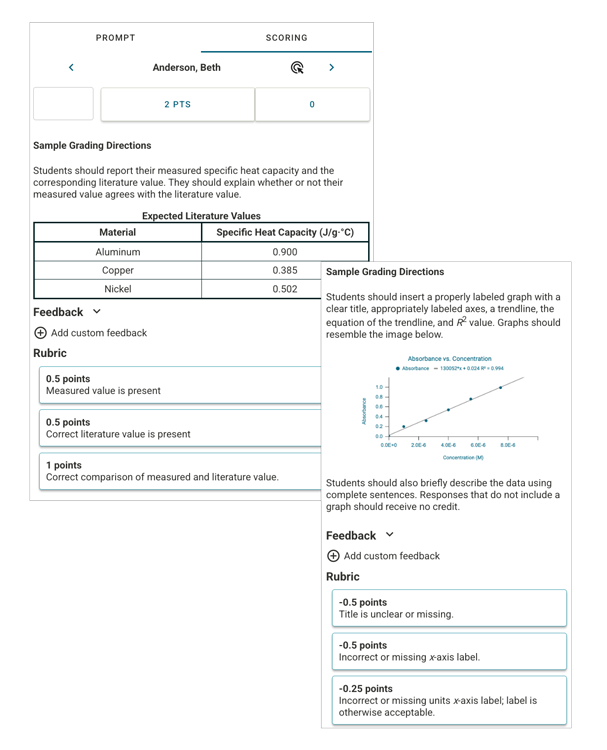Choosing the Right Rubric Style for Assignments
Whether you’re grading a detailed lab report or a quick check-in assignment, the type of rubric you use plays a critical role in both assessing student learning and guiding it. Rubrics aren't just grading tools—they're teaching tools, too.
Rubrics help ensure consistency and fairness in grading, but they also do more: they make expectations visible, provide meaningful feedback, and support metacognitive reflection. They can also enhance learning by clarifying performance criteria, especially in complex tasks like scientific writing. At Catalyst Education, we support three main rubric styles that each bring a different pedagogical strength to the table: single-choice rubrics, points-based rubrics, and multi-part rubrics. Each style of rubric can now be added (and edited) for any assignment with hand-graded items.
Better yet, using rubrics allows you to standardize and streamline grading! For the average assignment, we have found that adding rubrics to hand-graded essays and file uploads saves approximately four minutes of grading time per student. Moreover, when rubric buttons are provided, they are used 92% of the time, even when there is still an option to manually enter a score.
A single-choice rubric in an assignment
Single-Choice Rubrics: Best for efficiency because graders only need to select one button.
Single-choice rubrics are great for fast, targeted evaluation. In this style, the grader selects one option that represents the student's performance on a question. This approach is ideal for questions with a clear, holistic outcome—like writing a clear summary statement or noting observations. For instructors juggling large classes, single-choice rubrics provide a balance between clarity and efficiency. From a pedagogical perspective, they also help maintain grading consistency across multiple TAs or sections.
A points-based rubric in an assignment with positive point value buttons
Points-Based Rubrics: Best for detailed feedback because they provide granular control over scoring. However, these rubrics require more grading time (but only, on average, an additional 20 seconds per student) because graders may need to select multiple buttons.
When you need more granular control over scoring, points-based rubrics are your go-to. These rubrics allow graders to select multiple positive items that sum to a total score, or select multiple negative point items that deduct from a maximum score. This format mirrors the partial-credit systems many instructors already use and works well when student responses can vary widely in quality or completeness. Points-based rubrics also give instructors the flexibility to reward strong reasoning or penalize missing units—details that can make or break an assignment.
Multi-Part Rubrics: Best for scaffolded grading: These rubrics break down complex tasks into separate categories, with each category having its own set of rubric criteria, which can be single-choice or points-based.
Finally, multi-part rubrics are powerful tools for assessing complex, multi-dimensional responses. For example, a Claim-Evidence-Reasoning (CER) rubric might have separate sections for each category, helping students see how their conclusions, data interpretation, and logic all contribute to scientific argumentation. This style aligns with pedagogical frameworks like NGSS and promotes critical thinking and scientific communication—skills students need well beyond the classroom.
A multi-part rubric in an assignment with single-choice buttons (Enzyme Purity) and positive point value buttons (pH Activity Profile)
Summary
Each rubric style has its strengths, and the best choice depends on your goals for the assignment and your students. The good news? With Catalyst Education, you can build and customize rubrics to match your grading philosophy, and even mix and match depending on the assignment or question type. By using these rubrics, you can provide actionable feedback in a format that’s clear for students and efficient for instructors.




